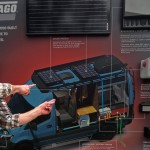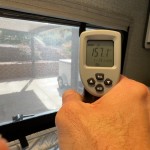This post may contain affiliate links.
Welcome to the sixth installment of the RV Basics series! Woo Hoo!
In this one, we’ll get into the very basics of solar power. This one starts off by explaining the basic components required to make RV solar work, and it wraps up with a super fun way to figure out how much solar power you might need on your RV. Like the rest of the videos in this series, this one comes in at an entry level, so there’s no previous solar experience required. Check it out!
This series of videos is sponsored by Winnebago, and we’re proud to be partnered with them to bring this to you. I hope it’s all easy enough for anyone to follow, but if it isn’t, let me know!
- In the first video in the series, we cover basic RV electrical systems, here: RV Basics: Understanding RV Electrical Systems for Beginners
- The second video covers freshwater plumbing. It’s right here: RV Basics: Understanding Fresh Water Plumbing for Beginners
- The third video covers wastewater plumbing. That one’s here: RV Basics: Wastewater Plumbing (and Dumping) for Beginners
- The fourth covers RVing in the winter. You’ll find that one here: RV Basics: Winter RVing for Beginners
- The fifth one covered basic boondocking and dry camping. It’s right here: RV Basics: Boondocking for Beginners!
If you have questions, let me know below and I’ll do my best to answer!











Good job on cutting through the technical mishmash, making it so simple.
I have a PleasureWay Ascent, with two 100 Ah (12,260 watt hour) lithium batteries and two 95 watt solar panels. The two solar panels are not sufficient to keep up with daily usage if I’m parked for more than 3 days. My batteries gradually diminish until they need recharging with either the generator or the engine alternator. I admit that I’m wasteful, using the inverter for 120v rather than starting the generator. If I had my druthers, an additional 100 or 200 watts of solar would do the trick—but there’s no room. I’ve thought of getting a suitcase solar panel system to augment the built on panels.
But most of my RVing is staying in one spot only 2-3 days, and then driving sufficiently that the batteries are fully recharged. For my normal usage, any more solar would be wasteful. That’s where many of the solar advocates go wrong—they fail to account for the actual usage of RVs. I agree, that’s as important as the numbers. If the RVers are plugged into shore power all the time, or if they drive every other day, then no or very little solar power is appropriate. If they park for long periods of time without moving, then more might be appropriate. I frequently advise when people ask about solar, solar is only a battery charger, a pretty inefficient one at that. A 100 watt panel only puts out close to 100 watts in southern Arizona on June 21st at noon. Otherwise, it’s pretty anemic.
Thanks, Cary. Sounds like we think pretty similarly when it comes to solar.
(Of course, we have 700 watts up top… but that’s mostly just because I think this stuff is fun to play with!)
317 watts. for a second I thought that was your FTP. thanks for another good video!
I wish!!
(Seriously de-trained right now…)
Fantastic video… loved your approach to testing. We do NOT have any solar on our Class B RV but we do have a second alternator and two 460 amp batteries. We stayed a couple of days parked at an event and used up 39% of our battery power, which means theoretically we could have gone another two days without even starting the engine to charge the batteries. So I just don’t understand the point of an expensive system like solar. if you want solar to charge your batteries, you need the sun to hit those panels with that wonderful energy it has. But of course, that means that wonderful energy is also heating up your RV. This means you need your A/C on while you are in the sun charging your batteries with solar. But the A/C uses A LOT of power to run, and since you are heating up your interior, you are needing A LOT of A/C. If all I do is use the energy my solar is giving me to cool off the van, what’s the point of solar? I just can’t get my head wrapped around it. It would seem there are only certain situations where the solar could be used while not needing the A/C on… you know… like winter! Thanks for any clarification you may have!
Well, there will always be that decision “Do I park in the shade, and I won’t use the air conditioner… but I won’t get much solar energy?” versus “Should I park in the sun, and I’ll get great energy recovery with solar, but I’ll have to run the air conditioner?”
For most small RVs, you just can’t put enough solar on the roof to make the latter option work out. So if you have the choice, perhaps parking in the shade makes more sense.
BUT
We’ve found that a simple choice like that is rarely presented. Most of the time, we wind up in the sun for a variety of reasons. Starlink reception. We’re in a grocery store parking lot. We’re assigned a parking spot at a rally. We’re driving. Or, there’s simply no shade around.
In those cases (which is well over 90% of the time, for us), if we’re going to be in the sun, then we might as well get the free power.
Also – by mounting our panels a few inches off the roof, we effectively create our own shade underneath the panels.
Finally, a light colored RV really helps here!
Basically I think you need enough solar to not need an umbilical power cable to keep everything happy while parked. Ideally fridge, enough climate control to mitigate freezing, and to keep the house batteries and remote monitors functional.
A storage situation… That should be easy enough to test and determine actual usage.